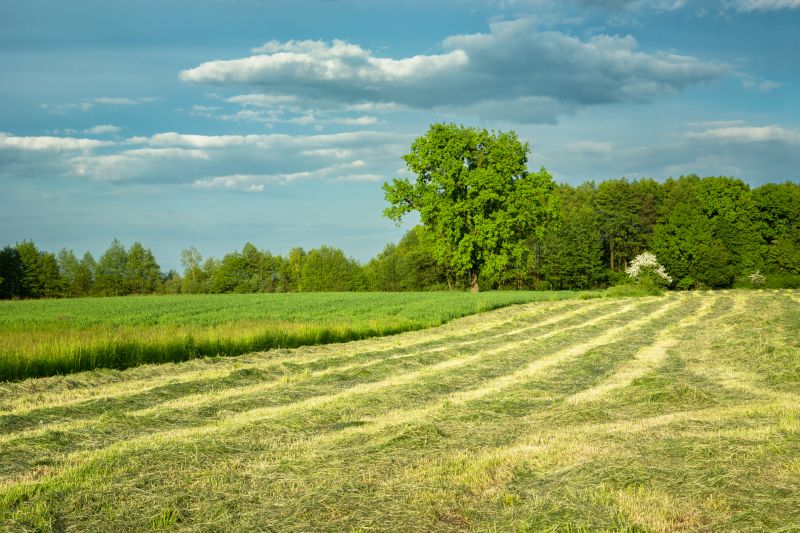Leading Products For Field Clearings To Boost Efficiency
Explore top-rated tools designed to make clearing large areas faster, safer, and more effective for professional and personal use.
 Field clearing is an essential task for land management, agricultural preparation, and outdoor maintenance. The right tools can make the process more efficient and safer, whether clearing overgrown brush, small trees, or dense undergrowth. Equipment designed for field clearing often combines power, durability, and versatility to handle various terrains and vegetation types. From handheld tools to larger machinery, selecting appropriate products depends on the scope of the clearing project and the specific conditions of the land.
Field clearing is an essential task for land management, agricultural preparation, and outdoor maintenance. The right tools can make the process more efficient and safer, whether clearing overgrown brush, small trees, or dense undergrowth. Equipment designed for field clearing often combines power, durability, and versatility to handle various terrains and vegetation types. From handheld tools to larger machinery, selecting appropriate products depends on the scope of the clearing project and the specific conditions of the land.
Top Overall Option
Multi-Purpose Clearing Tool Kit
A versatile kit that includes a range of handheld tools such as pruning saws, hedge trimmers, and brush cutters, designed to tackle various clearing tasks with ease. Its adaptable components make it suitable for different vegetation types and land conditions, providing a comprehensive solution for field clearing needs.
Types of Products For Field Clearings
Handheld Brush Cutters
Lightweight and maneuverable tools ideal for trimming thick bushes and small trees in confined areas.
Gas-Powered Chainsaws
Powerful saws suitable for cutting through larger trees and heavy-duty vegetation with ease.
Electric Pruning Saws
Corded or battery-operated saws designed for precise cuts on branches and smaller trees.
Clearing Saws / Brush Cutters
Robust tools equipped with rotating blades or trimmer heads for clearing thick undergrowth.
Mulching Attachments
Accessories that convert machinery into mulchers for shredding debris into mulch or chips.
Hand Pruners and Shears
Compact tools for trimming smaller branches and maintaining cleared areas.
Backpack Leaf Blowers
Powerful blowers useful for clearing debris and loose vegetation from cleared sites.
Rotary Cutters
Heavy-duty blades attached to machinery for large-scale clearing of grass and brush.
Skid Steer Attachments
Specialized attachments for skid steers to facilitate land clearing and debris removal.
Handheld Hedge Trimmers
Tools for shaping and trimming dense hedges or bushes as part of clearing efforts.
Power Pole Saws
Extendable saws designed for reaching and cutting high branches safely.
Root Removal Tools
Specialized tools for extracting stubborn roots and stumps after clearing vegetation.
Stump Grinders
Machines or attachments used to grind down tree stumps below ground level.
Hydraulic Tree Shears
Heavy equipment attachments for efficiently cutting and removing large trees.
Popular Choices
Widely used for their power and portability in clearing larger trees and thick vegetation.
Convenient for quick trimming and pruning tasks without the hassle of cords.
Versatile tools suitable for tackling dense undergrowth and overgrown areas.
Effective for removing remaining stumps after vegetation clearing.
Ideal for reaching high branches, making them popular for tree trimming.
Commonly used for debris clearance after field clearing activities.
Essential for detailed trimming and shaping of smaller vegetation.
Popular for large-scale grass and brush removal on open land.
Preferred for removing large trees in professional land clearing projects.
Increasingly used to convert debris into mulch during clearing work.
Popular among professionals for efficient land and debris management.
For smaller-scale clearing, handheld tools such as brush cutters and pruning saws provide precision and control. These tools are suitable for trimming thick bushes or removing stubborn weeds. For larger areas or more substantial vegetation, powered equipment like chainsaws, brush hogs, or clearing saws can significantly reduce effort and time. These tools are designed to handle tougher materials and are often equipped with safety features for user protection.
In addition to handheld and powered tools, there are attachments and accessories that enhance the capabilities of existing equipment. For instance, specialized blades, cutting heads, or mulching attachments can adapt standard machinery to specific clearing tasks. Proper maintenance and safety gear are also crucial to ensure efficient operation and to prevent accidents during field clearing activities.
Choosing the right products involves considering factors such as terrain type, vegetation density, project size, and safety requirements. Investing in quality equipment can lead to more effective clearing sessions and reduce the likelihood of equipment failure or injury. Whether for professional land management or personal property maintenance, the right selection of tools can facilitate a smoother, more manageable clearing process.
Key Buying Considerations
- Assess the size and density of the vegetation to determine the appropriate power and tool size.
- Consider whether a corded or cordless (battery-powered) device best suits your mobility needs.
- Evaluate the safety features, such as blade guards, safety switches, and ergonomic handles.
- Check the weight and ease of handling to reduce user fatigue during extended use.
- Determine the compatibility of attachments and accessories with existing equipment.
- Review the durability and build quality to ensure long-term performance in rugged conditions.
- Consider noise levels, especially if working in noise-sensitive areas or during extended hours.
- Identify the need for additional features like adjustable cutting heights or variable speeds.
- Evaluate maintenance requirements and availability of replacement parts or blades.
- Think about storage and transportation options for larger machinery or bulky tools.
- Prioritize tools with safety certifications or compliance with relevant standards.
- Assess the power source availability and convenience, especially for remote locations.
- Determine budget constraints while balancing quality and functionality.
- Review user feedback and expert recommendations for insights into real-world performance.
- Consider environmental conditions such as moisture or dust exposure that may affect equipment longevity.
This page contains affiliate links. We may earn a commission at no additional cost to you if you choose to purchase through these links.
